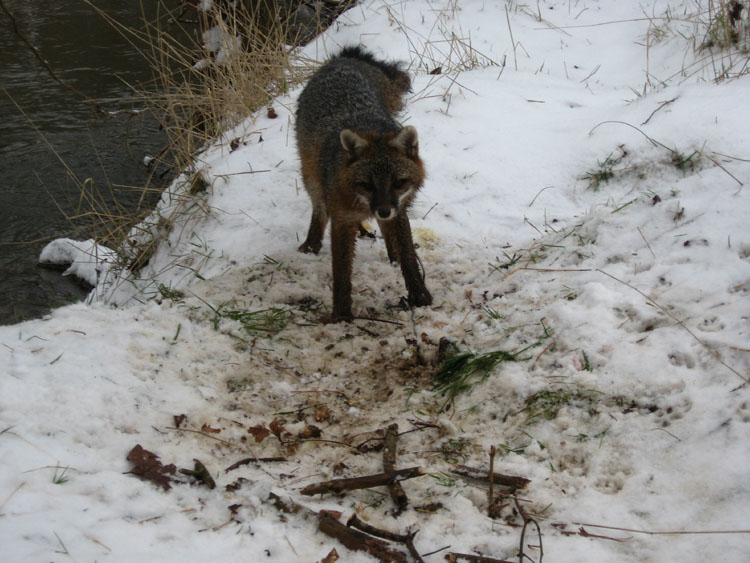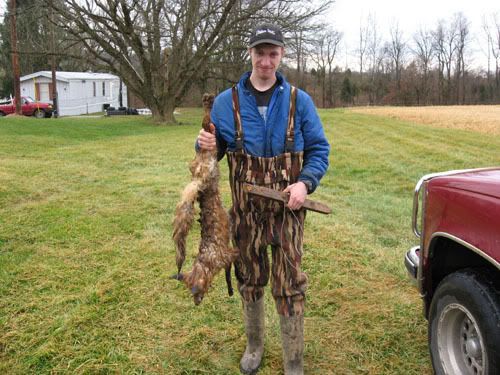Red/Grey Fox Tips

One of the most sought after furbearer for most trappers is the red fox and a valuable prize for those who attempt to catch it.Its smaller cousin the gray fox is not as valuable as the red and is not as common but have a habit of confusing those who have one visit their sets and not get caught and never come back.
The first thing before the season you have to have your traps tuned properly to maximize your chances to hold the animal when its it caught. In this part of you trap preparation is to adjust the pan tension, shortening the dog to the right size squaring off the dog and pan notch. Adjusting the pan tension on the coilspring is achieved by loosening or tightening the brass bolt to increase or decrease the tension. I used to shorten the dog of the trap and the notch after squaring up the notch now I just square-up the notch and dog. Instead of shortening the dog and notch I now do what is called night latching. This is done by taking your file and filing a notch into the top of the pan notch so that it goes 1/16th to 1/64th of an inch back into the pan notch and file it high enough for the dog to fully engage the night latch, the reason for the name is that you can set this trap in the dark because when you put the dog in the main notch and into the night latch you hear an audible click as the dog slips into the night latch. Now with this almost as soon as the pan falls the trap will fire, knowing this it is important to have a little extra pan tension then with the normal notch.
When trapping on land often dyeing is not necessary but is a good thing to do since there is the chance of your trap covering coming off because of the wind or it being eaten in the case of using poor buckhulls. You also need to wax your traps. Dyeing traps is done by boiling traps in logwood dye or walnut hulls and other methods. Waxing traps is done to protect traps from rusting and lubricating the trap adding speed. All you do here is melt wax in water or just melting it on its own, but you will need much more wax doing it that way. Dip the trap in the wax of two minutes then dry. Another method of doing this is using sped dip or cold dip that lubricates and dyes.
When trapping canines it is important to be as clean as possible to prevent scaring away a sharp nosed canine like the fox. Cleanliness, the hardest to maintain and easy to forget. When constructing a new set wear clean gloves, there are a couple trappers I know that handles his traps barehanded because of the canines' being accustomed to human smell, use clean traps (clean meaning no smells),and have a kneeling pad commonly used for gardening so you can sit down on and keeping your smell form further being add to the set site. When you add the lure, bait or lure to the set take off your gloves and put another pair on or just don't put another on if you prefer and remember not to make contact with anything except the air and the lure bottle.
When you ask permission to trap on somebody's land you just don't wait till season and set traps anywhere on the property and expect to catch a fox, you have to scout. When you are scouting you are looking for trails,tracks, dropping, signs of feeding. When you find the sign of an animal record its location in a notebook and when you come to make your sets, set near where the sign was found. I would suggest that you make a map of the property and map the location of the sign you found so see where the concentration of sign is and to identify the common travel ways.

Remember to keep an open mind while trapping foxes or any other species of animal. Try new things and see if they work, do not get in a rut and do just what you been taught to do and nothing else. Never make each set the same in the same area, make variations, use lures made for mink or raccoons at some sets where you have a trap smart animal.
All information on this site is © by Dustin Caudill. E-mail for permission to use information or picture at sniperbbb@hotmail.com